In 1950, there was no indication that DeSoto would ever disappear as a Mopar nameplate. In fact, DeSoto sold 133,605 cars that year, just about double what this brand sold in 1946, so it was a popular car at the dawn of the 1950s (and this was its best year ever until 1953 came along).
Launched in 1929, DeSoto was intended by Walter Chrysler to help the nascent Chrysler Corporation compete with the famous GM brand ladder – a car for every pocketbook.
The DeSoto line was slotted just below Chrysler itself, and competed well for many years with mid-priced brands Buick, Oldsmobile, Mercury and Hudson – though doubtless sometimes took sales away from Dodge, which was also a mid-priced Mopar brand.
The 1950 DeSoto was a well engineered, well built, reliable, roomy and comfortable car. It was no barn burner though, featuring an L-head six producing 110 horsepower, coupled to either a three speed manual or a fluid drive semi-automatic transmission.
Most DeSotos sold in 1950 were four door cars; there were 18,302 Custom Series S14 Club Coupes produced, and 4,600 Special Club Coupes produced that year.
This very pretty looking grey 1950 DeSoto Club Coupe for sale in Austin, Texas on Craigslist is one of those relatively rare two door cars made that year, and appears to be in far better than average condition.
The light grey factory paint and what appears to be original chrome look extremely good. The interior was evidently redone to match the original materials in 1999.
This car does feature the fluid drive transmission, that requires a clutch to put in gear and then drives like an automatic. These transmissions do take some getting used to for contemporary drivers.
According to the seller, the car is “bone stock,” has been garage kept and driven less than 100 miles since 2008. The engine was rebuilt and detailed in 2013. The car features a full set of new Coker white wall tires (not radials), and the interior is said to show no stains or wear. The seller says the body seams are all perfect and the trunk is original metal and rust free.
This car does look like a very nice driver and clearly has been well loved by its current owner. Unfortunately, it is considerably over-priced, with an ask of $15,750. This car fits nicely into the Hagerty #3 “good condition,” which puts its value in the range of about $10,400.
Even giving the car credit for the engine rebuild and new interior, you’d not want to pay much more than $11,000 for this car, and I’m guessing most of our hard bargaining Barn Finds readers would peg it lower than that. Still, I can’t help liking this car, and I hope it will go to as good a home as it seems to have had for most of its long life.

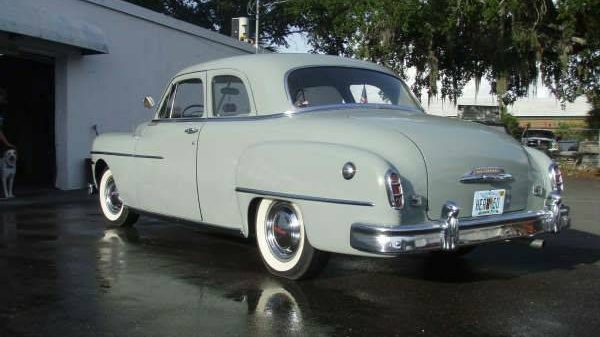

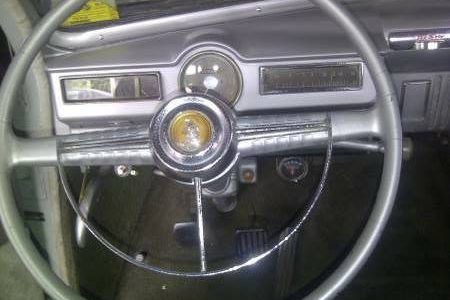


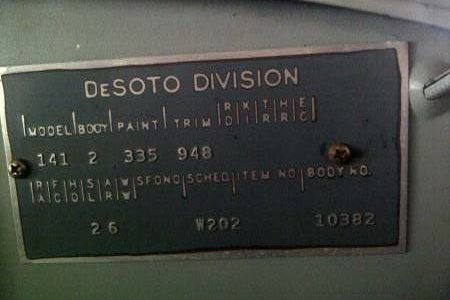
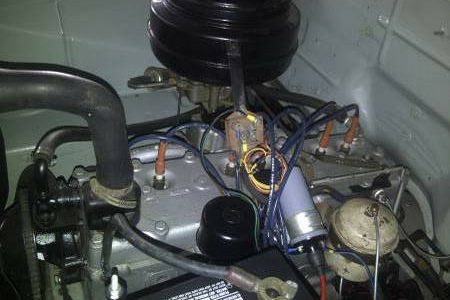
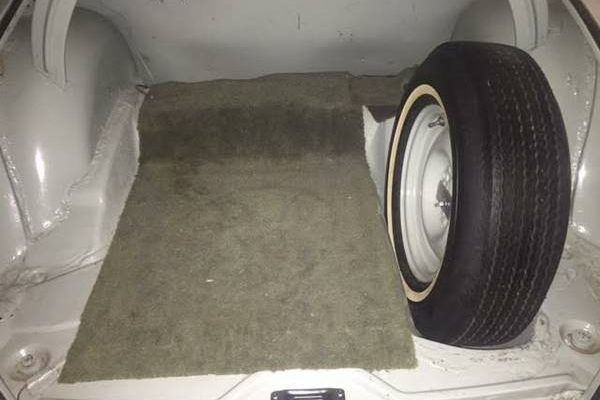

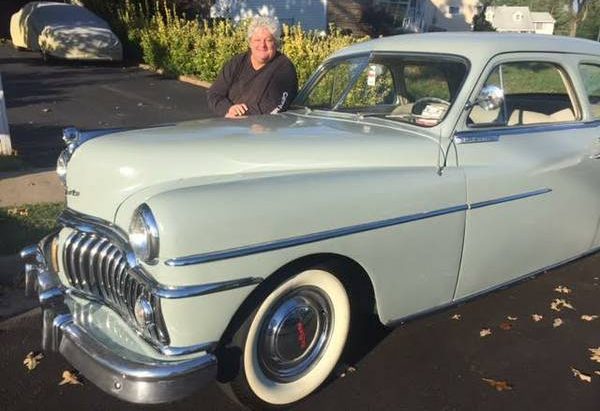


Driven less than a mile a month per average over the last eight years? The interior work seems to have been done with an eye to making it a pragmatic driver. It’s handsome garage art, but I think the lady might’ve found it to be a bit cumbersome with the drum brakes and manual steering, much less the nostalgic semi-auto. I don’t mind those austerities, but when I get to be her age (25 or so years judging from the image) I can certainly imagine having a different view of things. This is in Texas with no air conditioning? I would have Views on that _now_. With a stock drivetrain, these cars are best suited for a stately pace of driving which cannot compete with today’s traffic. If you are in a pleasant neighborhood with a bit of a public park nearby, this would be fine for a jaunt where you had no set schedule.
Ok I have a question I’ll let my internet friends answer instead of using google:
How do you drive these cars from the 50’s with the gas/blend available today? I used to be a late 60’s-70’s car guy but now I’m playing around with the 80’s cars I couldn’t afford in high school so the issue has never presented itself to me. How can this really cool Desoto even run using gasohol?
Thanks!
You bring up a good point that I’ve been concerned about for years and I’m not talking about the stuff being unleaded which is what most people think of when I bring up the subject. Personally, I think ethanol in gas is just a big political scam but that’s another subject for another time. Alcohol and rubber DO NOT like each other and unless you have “newer” gas line parts (yeah, for a 50 Desoto) the alcohol will deteriorate the rubber. Back in the mid 70’s, I bought a 60 Corvette with a stock 283. I used to buy gas for it at a local Arco station. The car ran ok but nothing special and I thought that it was just an old car. Well, that’s what I thought until one day I filled up at a Shell with SU2000. Well, if you would have put a blindfold on me and took off with me in the Vette, I would have sworn that I was in a different car–it took off like a rocket compared to how it accelerated using the Arco gas. Later on I found out that Arco was using ethanol in its gas at that time but they weren’t required to disclose that on its pumps and Shell was not using ethanol in its SU2000. Back in the late 80’s, my local Shell station was still selling pure SU2000 gas but were going to switch to added ethanol. Shell put out a brochure about the change and warned that older cars might be “sensitive” to the ethanol in their gas which I took to mean the rubber would erode, gas would leak, and the car could catch fire. I’ve since gotten rid of the 60 and my oldest car is a 71 Camaro. The 71 Chevy brochure said that the engines were designed to run on leaded or unleaded but make no mention of ethanol. Since I can’t do away with the ethanol, I try to minimize it. There are Speedway gas stations near me that sell racing fuel. When it comes time to fill up, I put in about 25% racing fuel and the rest Shell gas with ethanol. The result is that I’ve diluted the ethanol and my old cars seem to like it.
Dave,
They will run on gasohol, but they don’t like it a bit. Stored over the winter, it’s more likely to turn to jelly and can ruin internal carb parts. Makes the car more prone to overheat and vapor lock too, and there is no lead which the old valve seats need. My solution is to find the nearest station selling pure gasoline and only use gasohol in a pinch.
I love that big agressive grill in the front. Very cool car…………..
Nothing wrong with Gasohol – unless you try to run an engine on it! And don’t even THINK about mixing it for 2-stroke use!
Down under in Oz most gas stations have 1 or 2 pumps for ethanol fuel, all the rest are normal unleaded with 91, 95 and 98 octane. I have to run my Imperial on 98 otherwise it pings like hell on the slightest heavy acceleration or hill. If I can get it a quart of Avgas in a full tank makes the car want to jump out of it’s paint, but it’s regulated because there’s no Gov. excise on it and we all know the Gov’t. has to make a ‘buck’ don’t they ! Apparently the Avgas is about 115 to120 octane.
My 77 305 cu.in. El Camino is built for 91 and it’s written inside the gas door and on the gauge face to only use unleaded 91 octane.
Thanks for helping out! I remember (20years ago?) you could get a lead additive at gas stations etc but I haven’t seen it in years. I also remember everyone with an older outboard boat motor had to have their heads redone about the same time because pump gas lacked lead. As far as the blend goes CrazyDave is right as rain, my high strung two-strokes will run on premium octane pump gas and expensive oil for about a week before they decide to bog down.
I’m starting to look at some older trucks that were never meant to be run on unleaded. Just wondering if there’s engine work to do, if engine work has most likely been done?
FYI my ’87 Z28 runs fine on premium I just try not to keep gas in the tank very long, 305 for life yo!
For 1971 models, GM lowered compression to allow unleaded gas to be used. They quickly discovered it was not just a compression issue. These cars quickly needed valve jobs if unleaded was used. It seems that by 71 most folks had forgotten how lead had reduced or eliminated burned valves with its lubricating quality. Hardened valve seats soon followed.
I’ll gladly take hardened valve seats for the privilege of not having lead fouling out my spark plugs and messing up the oil. People forget we used to have to mess with spark plugs every several thousand miles. The culprit is not unleaded fuel, it’s that lousy ethanol which is as someone else said, a feel-good scam.
My 30’s cars with straight 8’s run fine on gasohol, but they like staight gasoline a lot better. We just did a 125 mile tour (half the day in the rain!) and my car never had a hickup.
I love those old cars…I resurrected a ’52(?) coupe with a hemi in high school and it was a cool old ride. I have done several old Mopars and love ’em even tho I’m a GM man. I’d like to own this but would absolutely stop at 10g…
Man, that old generation engine would probably bend a Harbor Freight hoist
I had a ’49, same color. it was a good car but it was practically the definition of “stodgy” – a real Grampa car.
I agree with most of what’s been said about ethanol. It is a curse, and it is purely political. Fortunately. there aren’t very many rubber parts in the fuel system of a car like this, and they can all be updated with modern parts – carb kit, fuel pump kit, and modern hoses. That won’t make it run any better, sadly, but you can mitigate the fuel deterioration problem greatly by using Sta-Bil Marine (now Sta-Bil 360) or a similar product in the gas. I’m lucky to live in Oregon where we can still buy non-adulterated fuel, but it’s appallingly expensive. Still, it’s worth it, since I don’t drive my collector cars in daily service.
Fond memories! My first car was a ’50 DeSoto convertible, bought for $85 in 1959. Virtually indestructible, always started etc.
My Dad had a 52 with the tiptoe shift. You would let your foot up off the gas to go into the next higher gear. Nice car but slow as molasses.
Howard Cunningham’s car.
And the problem is not confined to “old” cars, the cats on cars up to the mid 2000’s die early on ethanol – an expensive replacement – I wonder if the pollution caused by building new cats (and on my 2002 Audi the whole exhaust system) is more than the gain to whoever gains from ethanol?